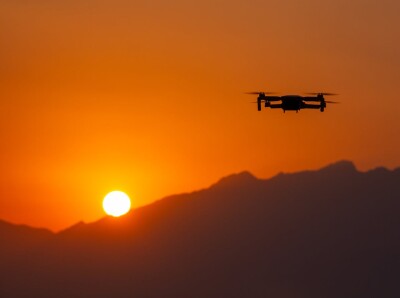April 29, 2019
Switzerland Takes the Lead Around the Safe Integration of Manned and Unmanned Aircraft
As industry and regulatory stakeholders across Europe work to establish a framework for pan-European drone regulations, some countries and regions have taken the lead in terms of establishing how manned and unmanned aircraft will be able to safely interact. Most agree that Switzerland is at the forefront of this endeavor, as they have become one of the world leading locations for the development of core technology and high-end applications for drones.
The approach that industry stakeholders and regulators have taken in order to see this ecosystem enabled were discussed in detail during the
Authorizing BVLOS Operations at Scale: Lessons Learned from Switzerland session at XPONENTIAL 2019. Moderated by Matt Julian, Director USA of Invest Western Switzerland, participants explored how and why Switzerland has been able to establish itself at the forefront of flying robotics and unmanned systems. They also detailed what other countries and drone stakeholders across the world can do to put themselves and the drone industry as a whole in a similar position.
What was especially telling to hear about was that the drone story started in Switzerland over 15 years ago. Technology developments took place in the lab and efforts to access the airspace didn’t occur until 2015. By that point the need to manage traffic and facilitate the creation of drone-friendly regulation was evident, and industry stakeholders along with regulators were committed to the creation of an environment that could balance safety with innovation. Lorenzo Murzilli, Manager, Innovation and Advanced Technology at the Swiss Federal Office of Civil Aviation, mentioned that the safest option when it comes to drones is to simply not fly, so what does it mean to get past that position in order to achieve this balance?
Much of that balance comes from U-Space deployment, which will allow users to get authorization to fly when needed in an automated manner when possible, but facilitated by someone when necessary. Lessons from this process are being learned in Switzerland right now and can be employed at scale. However, the difference between a vision about how the technology can work at scale is often far different from the reality. That’s why it’s essential to test and explore this reality sooner rather than later, and why what’s happening in Switzerland is so critical.
Francois Cornu, Sr Project Director of Economic Development at Canton of Vaud (DEV) and Paolo Resmini, Software and Flight Safety at MATTERNET discussed three of the biggest challenges that exist for regulators, which ultimately come down to technology limitations, authorization and costs. Technology limitations underscore the importance of creating a whole ecosystem and how manned and unmanned aircraft need to interact with one another. Authorization issues are being worked through with U-space, but it requires collaboration on a whole different scale. Finally, costs can and have to be managed by working with providers to level up the availability of low-cost parts.
Ultimately though, the two biggest barriers to drone technology working at scale center on public acceptance and the creation of a U-space system that facilitates the safe integration of manned and unmanned aircraft. Dannick Riteco, Head of UTM Risk Services at AirMap explained how and why public acceptance of drone technology is so critical, and mentioned how efforts in Switzerland have been so essential is making the public aware of how the technology is being deployed. That includes an effort to send fliers to everyone in the area where a drone will be in operation, as well as community gatherings where these applications are discussed.
Enforcement is also a major topic of conversation around enabling this drone ecosystem in Switzerland, and the panelists discussed how it’s a challenge to provide police departments with an action item. They can be aware of what’s happening with a given drone operation, but what’s next in terms of enforcement for them? That issue comes back to perceptions of the technology and ensuring that the public understands the value. If the public doesn’t accept something it’s often because they don’t see the benefit, and that’s why an understanding of any commercial drone applications, from everyone, is so critical.
Lorenzo summed up where things are and need to go for regulatory and technology stakeholders in saying that the airspace can no longer be separated. Industry stakeholders can compete on everything except safety, and it’s why sharing experiences so they can be addressed as an industry is so essential. Everything has to be integrated, and Switzerland’s efforts to safety integrate manned and unmanned aircraft have created a model around what U-space could look like across Europe and the entire world.
Questions from the audience focused on weather standards, what kind of active outreach efforts need to be made to manned aviators, whether or not there’s a formal process around collaboration efforts and much more which ended up continuing long past the end of the session.
To learn more about why Switzerland has become the place for drone technology, visit
https://investinswitzerland.com/drones/ 



.jpeg.small.400x400.jpg)










Comments